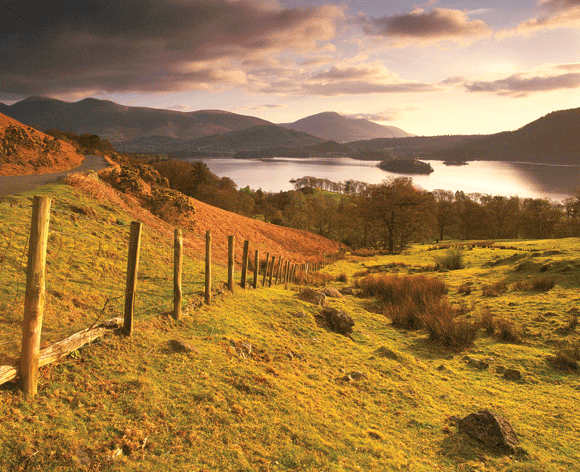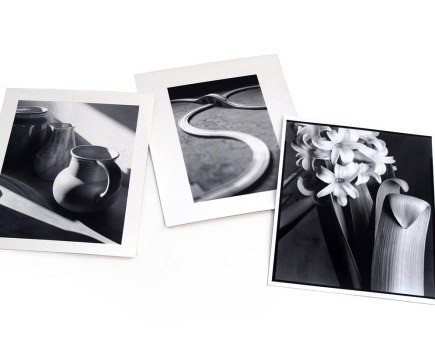Autumn is the most photogenic season, so make the most of it by using our guide on how to shoot great Autumn pictures…
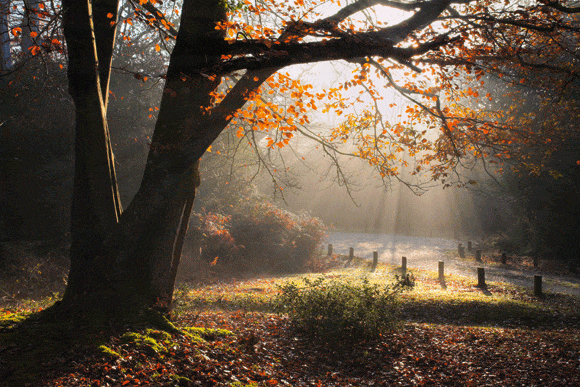
Shafts of sunlight stream through these branches onto the blanket of leaves on the ground
Autumn is, perhaps, the most photogenic season of the year. It features misty mornings, fiery sunsets, and rich oranges and reds in the trees before the leaves fall and blanket the landscape. Later in the season you may see dewdrops on the undergrowth and the first frost as we move into October and November.
Opportunities for taking Autumn pictures are often fleeting, as a change of weather can cause the leaves to fall within just a few days and, as the days shorten, the time you have to shoot in daylight is limited, with patches of rain spoiling your shoots.
With a little patience though, and good planning you can achieve some stunning Autumn pictures that will make all your effort worthwhile.
We look at ways to maximise your autumn shooting potential and get the very best out of the season.
Autumn pictures: Capturing Autumn Colours
The most noticeable facet of Autumn pictures is the distinctive colour: the rich warm tones and the range of browns, reds and oranges.
This abundance of warm tones can play havoc with auto white balance systems and, in the same way as sunsets, can end up looking too cool toned. For this reason it is important to use the Sunny white balance preset, especially if shooting in JPEG – as Raw files can easily be corrected in processing.
To boost the richness of the colours you can also try selecting the Cloudy preset, or increasing the colour temperature when processing your Raw files.
Autumn pictures: Locations
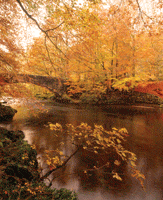
With its rich auburn colours, the River Brathay in the Lake District has a perfect autumnal feel
As the main emphasis of most autumnal shots is the changing colour of leaves, it pays to find a location that not only has a wealth of trees but a range of different plant life to create a wide range of tones in your image, from green to brown and red.
Different species of trees will change colour differently and at varying times, while others will maintain their full greenery all year, giving a wide spectrum through your scene.
Aside from heavily wooded areas it is also worth considering more urban or residential areas where trees feature, or local parks that will also provide you with people in your scene.
Autumn pictures: Animals
Don’t be tempted to purely focus on the foliage. Capturing wildlife in their natural environment, among the rich colours, can be even more rewarding.
A popular subject at this time of year is deer, as they have recently lost the fur from their antlers, leaving them stark and clean for great silhouettes.
They can be easily spotted in country parks across the UK and are usually tame enough to get a decent shot.
Autumn pictures: The golden hour
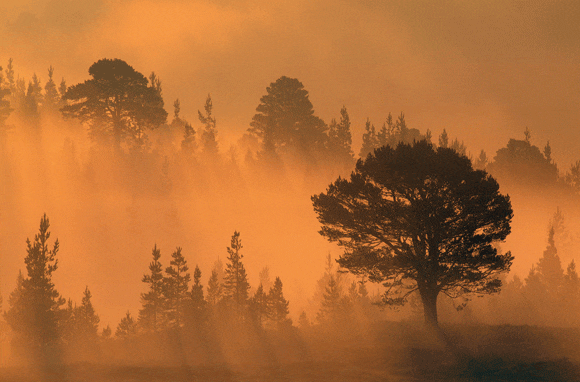
This image of backlit pine trees in the mist, in Abernethy, Scotland, evokes a mysterious and tranquil atmosphere.
Daylight hours start to decrease rapidly as autumn progresses so you need to make sure you get your timing right.
The shorter days can actually help as it makes getting up in time for the dawn light, and staying out for sunset, a far less arduous endeavour. These are the best times for photography at any time of year but, for October and November especially, they offer a more impressive potential.
Early morning mist is more common and this can help create a great atmosphere to your images as the sun rises through it. In the evening, sunsets can add even more warmth to your image to complement the redness.
The ‘golden hour’ refers to the optimum time for photography that occurs at daybreak and dusk when the sun lights up the sky and is often still hidden behind the horizon, giving a soft warm light.
Autumn pictures: Using the Rule of Thirds
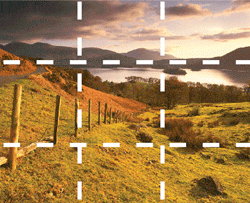
A good landscape image always relies on strong composition and the easiest way to achieve this is by using the rule of thirds.
The principle is to divide your image up into thirds both horizontally and vertically. The result is a series of lines that cross your image, which can then be used as a guide for your composition. It is best to place your horizon on one of the two horizontal lines, and to have any foreground interest in line with one of the vertical lines.
Following these rules avoids subjects being placed directly in the centre of the shot and creates much more pleasing compositions.
For your autumn scenes, where you may be concentrating on the trees, you may want to have the horizon on the lower horizontal, with the branches and leaves filling the upper sections of the composition. For a standard landscape you would generally place your horizon on the higher horizontal line, leaving room for your foreground in the lower third.
Autumn pictures: Leading lines
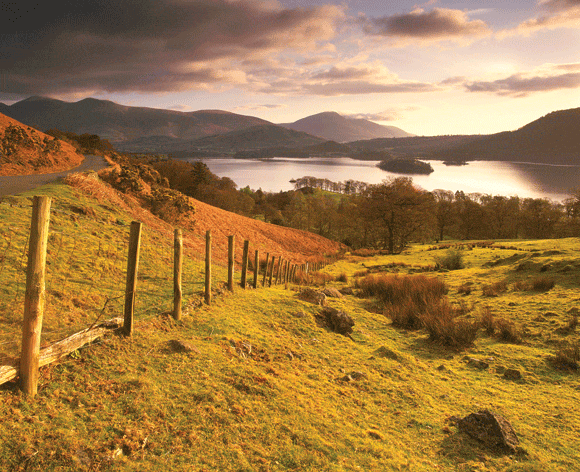
This landscape photo shows great use of the rule of thirds, with the horizon on the upper horizontal and the fence posts entering the frame in the bottom left section to draw your eye into the image
Leading lines can also be beneficial to any landscape, as they help guide the viewer into and through the image.
The ideal is to lead the viewer’s eye in from the bottom left of the image towards the centre or top right, intersecting with the lower horizontal ‘thirds’ line at its entry point to the frame. A wall or fence, such as in the example shown on this page, is ideal for this purpose, though a path, river or even a line of trees can provide the same effect.
Many cameras will offer assistance in your composition by providing rule of thirds dividing lines either on the focusing screen or on the live view display, so you can ensure everything is lined up in the best positions before you take the shot.
However, with a little practice, you will soon learn to judge a scene for yourself and you can always make slight adjustments to your composition using the crop tool afterwards when editing your images on the computer.
Autumn pictures: Using depth of field
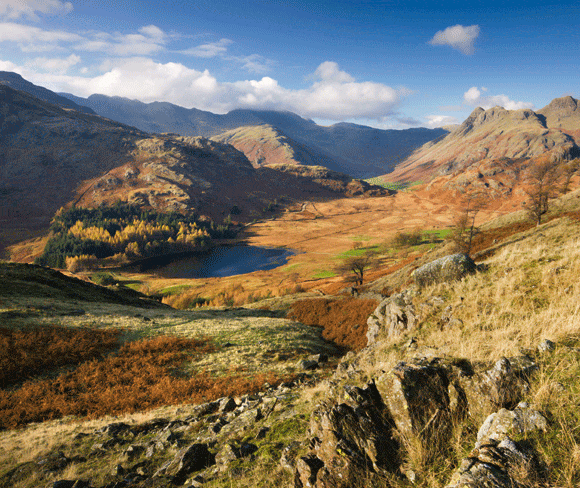
This stunning landscape from Adam Burton utilises the maximum depth of field to keep the entire image sharp.
Depth of field is the term for the amount of the image that remains in focus.
As the focal plane remains perpendicular with the sensor, the area of focus can be thought of as a depth, going back into the image.
For landscape images we generally want to maximise this focal depth, or depth of field, to keep as much of the image sharp as possible. This is achieved by using a small aperture, such as f/18 or f/22, but can also be affected by whereabouts in your image you focus: your depth of field extends both in front and behind your point of focus – usually around one third in front and two thirds behind – so, by focusing on infinity (the furthest point) you can actually be wasting up to a third of your focused area. The hyperfocal distance refers, in part, to the point of focus in your image to obtain the maximum depth of field.
You can find the optimum focal length by using a depth of field table or, if your lens provides marked focus distance, the chances are it will provide depth of field marks at certain apertures.
These marks (two for each aperture) will show you the depth of field for each aperture and, by lining the right-sided one with the infinity symbol, the left-sided marker will line up with the closest distance that objects will be in focus.
Alternatively, you can use the markers to determine what aperture you will need to get your scene in focus.
Aperture

The camera should first be set to your Aperture priority mode, and a small aperture (f/16 or above) should be chosen.
Scale
 The markings in the focus window allow you to line up your infinity with your aperture, while the second shows the minimum focus.
The markings in the focus window allow you to line up your infinity with your aperture, while the second shows the minimum focus.
Older lenses
 Aperture markings are more common on older lenses and are now generally reserved for high-end models only.
Aperture markings are more common on older lenses and are now generally reserved for high-end models only.
Autumn pictures: Macro photography
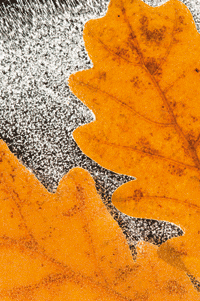
Autumn photography isn’t limited to just wide vistas; homing in on some fine detail can make for an equally great shot.
Fallen leaves are perfect candidates for a macro shot, as are the colourful plants and berries that start to bloom this time of year. So when you’re out and about it’s worth looking around your feet as well as just what’s in front of you.
Macro photography is about getting a subject life-size on your sensor, so you can really explore the detail and colour. This requires a specialist macro lens so that you can focus close enough but many lenses offer close focusing that will allow you to get a reasonable distance from your subject.
Try shooting bright subjects against contrasting backgrounds, such as a rich red leaf against a grey rock, or a coloured berry against a plain green backdrop. Alternatively look for patterns and textures, focusing in on areas of bark or piles of leaves to create interesting abstract patterns in your composition. Using a tripod is very important with macro shots, as even the slightest movement can cause blurring.
Autumn pictures: Running water
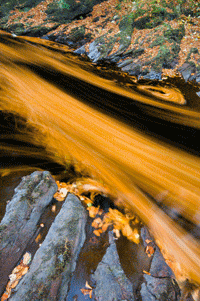
Normally, movement in an image can cause problems, but in the case of water it can actually improve it.
By emphasising instead of trying to eliminate the movement you can create a soft blur that makes the running water look more like cotton wool. By using a longer shutter speed of half a second or more, with the camera sturdily mounted on a tripod, the water can blur while the rest of the scene stays sharp.
Often the late afternoon lighting is low enough for this to happen naturally, especially in wooded areas, but there are some ways to help the process on its way.
Smaller aperture shots will require longer shutter speeds to gain the same amount of light, so by reducing the size of the aperture (increasing the number) it is possible to reduce your shutter speed and therefore the blurring.
For brighter days, when it isn’t possible to obtain a long enough shutter speed this way, you can use neutral density filters. These simply reduce the amount of light entering the camera without adjusting or altering it and means you can reduce your shutter speed without overexposing your image.
This process is great for injecting calm into an image and the effect can work just as well on clouds or trees and grass being blown around by the wind.
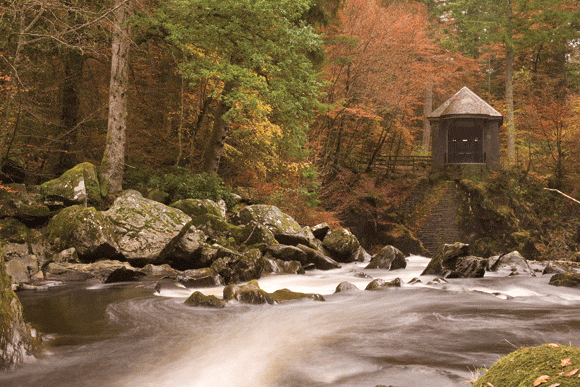
An ND filter has allowed the light to be reduced entering the camera, providing a slow enough shutter speed to blur this water
Author: Matt Gallagher

